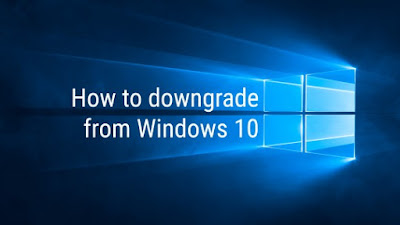Specifications and everything about new Lenovo’s most powerful 15.6" mobile workstation
Downgrading from Windows 10 is easy as Microsoft is offering a simple solution for those who have upgraded to 10 within the last month. But, even if you have been using Windows 10 for more than a month, or performed a clean install, you can still go back with relative ease.
How to downgrade Windows 10 to 7 or 8.1
Ensure you’ve backed up your key files to external hard drives, USB flash drives or cloud services like Dropbox, OneDrive or Google Drive.Open Cortana, search for “Recovery” and click the settings result (the one with the cog next to it).
If you’re eligible to rollback to an earlier version, you’ll see the option “Go back to Windows 7” or “Go back to Windows 8.1” under “Recovery”. Click “Get started” when you’re ready.
A pop-up will then appear asking why you’re going back. Cite your reasons and strap yourself in for the rollback process.
That’s it, you’re done and back to your Windows version of choice!
How to uninstall Windows 10 from a clean install or if you can’t roll back
Downgrading from Windows 10 to an earlier version of Microsoft’s OS if
you performed a clean install is a little tricker than upgrading. If
your month rollback window has also closed, this is how you’ll still be
able to go back to an earlier version of Windows.
- First, back up your key files to external hard drives, USB flash drives or cloud services like Dropbox, OneDrive or Google Drive.
- Next, you’ll need your Windows 7 or Windows 8.1 install DVD to perform a recovery installation of Windows. If you don’t have that, worry not – Microsoft has been kind enough to provide recovery software for Windows 7 and Windows 8.1, provided you still have the product keys.
- Download and install the recovery software. You can mount it to a USB or DVD with Microsoft’s USB/DVD download tool.
- Make sure you have your product key to hand. You can find this on a “certificate of authenticity” sticker located somewhere on your Windows 7 device. Windows 8 and 8.1 users usually have the product key embedded in firmware, so it should install without asking you for one.
- Startup your recovery tool and tell it to overwrite the Windows 10 installation. Sit back and wait for it to complete.
- That’s it, you’re done and back to your Windows version of choice!







![List of Smartphones compatible with JTL Faiba4G and how to configure Faiba4G [Updated]](https://blogger.googleusercontent.com/img/b/R29vZ2xl/AVvXsEikdB2PwQQQeIImGjcyfKZFQVNJIOZhEOx4Z3RpDpoFpFem4oAbU_SMTzRx_5U0F2i8aboMnNsIjmKQOTp39LM7lajjn3rsJ-7IvQRYbhEM5u2T9Y9zlrfHfvjbjQn4sPE96ZXK6w_KrgP_/s72-c/JTechpreneur_Smartphone+LTE+Compatible.png)


No comments:
Post a Comment